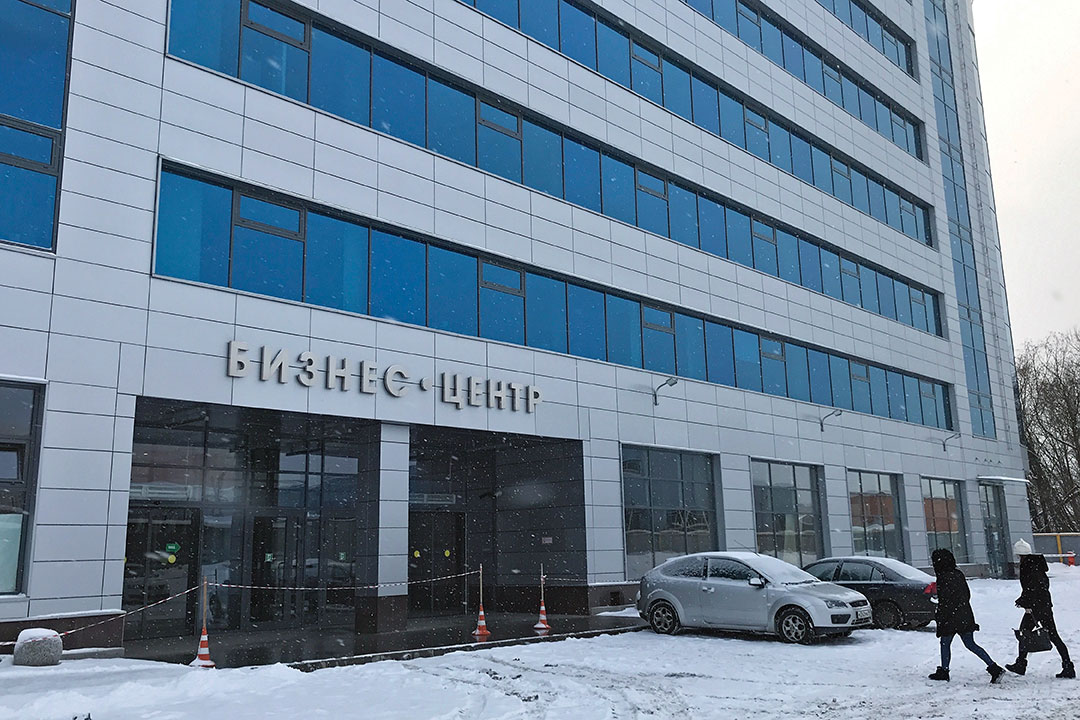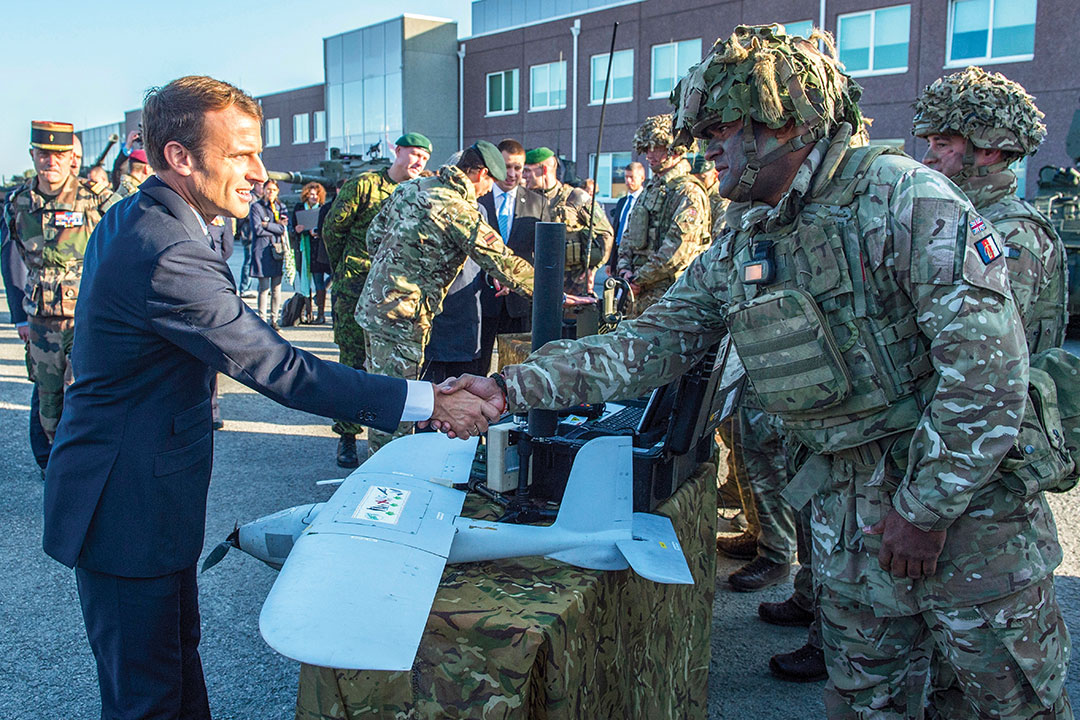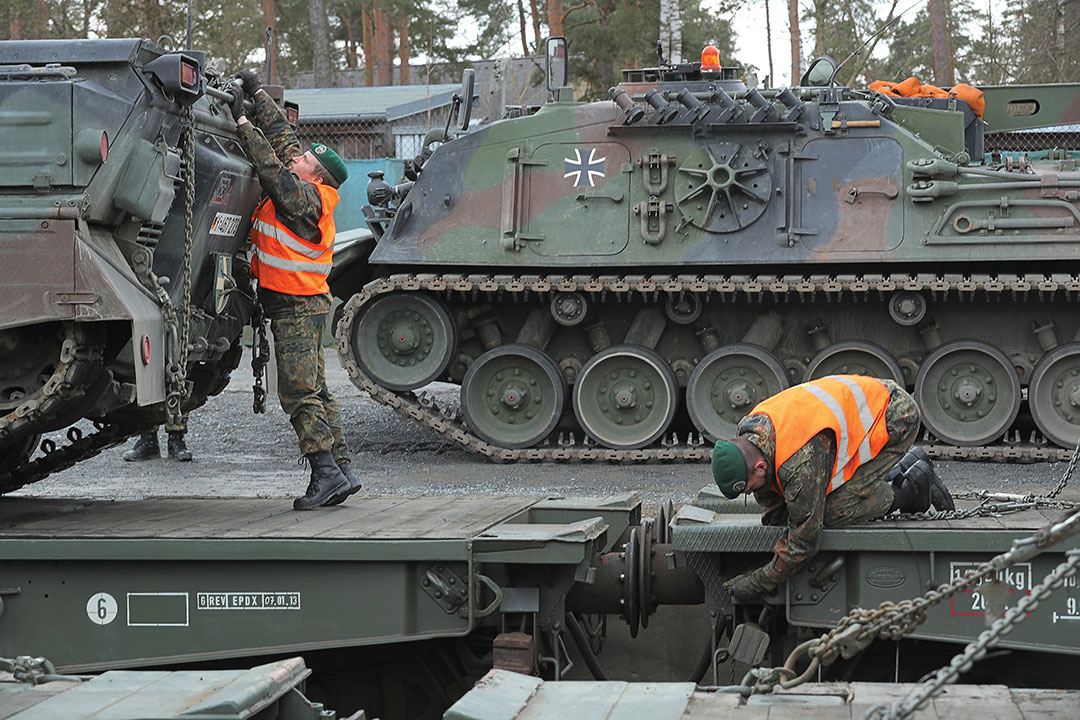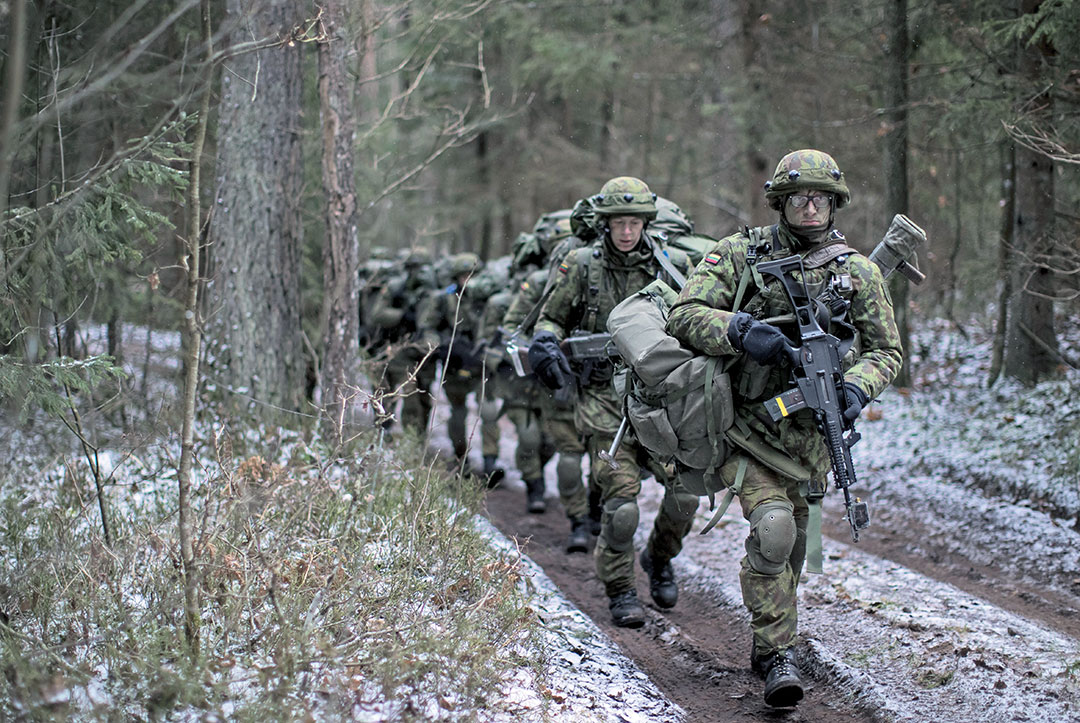Russian Soft Power in the Baltics
By Irine Burduli, Georgia Ministry of Defence
At a NATO Accession Ceremony in 2004, U.S. President George W. Bush underlined the importance of the day for the new members and for the Alliance. “Today marks a great achievement for each of the nations,” he said. “Our seven new members have built free institutions; they’ve increased their military capabilities in the span of a decade. They are stronger nations because of that remarkable effort, and the NATO alliance is made stronger by their presence.” However, NATO’s expansion would do little to cease Russia’s revisionist policy toward its neighbors. Rather, it marked the beginning of an era of softer confrontation by Russia.
NATO-Russia relations have never been easy. Although there have been times when both sides could agree on topics, there remain several areas where they fundamentally diverge. The most controversial issues are related to NATO’s enlargement policy and the buildup of its members’ military powers, especially near Russian borders. The Military Doctrine of the Russian Federation of 2014 openly names NATO as the country’s “main external military risk.” Bringing the military infrastructure of NATO members near Russia’s borders is considered by the Kremlin to be one of the country’s top security threats. Many experts even use the term “New Cold War” to describe the current relationship between the Western and Eastern blocs, and they consider the Baltic states particularly vulnerable to Russia’s increasing number of indirect threats.

With its invasion in Georgia in 2008 and illegal annexation of Crimea in 2014, Russia re-emerged as a revanchist power with increasing aggressiveness toward its neighbors. Security threats escalated in the Baltic states, which, despite being NATO members, remain an area of Russia’s interest and interference. Because there is little likelihood that Russia will engage in direct military confrontation with any of the Baltic states and therefore clash face to face with NATO, many view the Russian threat as exaggerated. Those who set off alarm bells are regarded as fearmongers. However, the threats should be considered seriously and not only in Estonia, Latvia and Lithuania. By expanding its sphere of influence over the Baltics, Russia aims to restrain their independence, manipulate their political and economic pro-Western choices, and thereby test NATO’s stability and unity.
The challenge for NATO members is understanding how Russia intends to secure its declared interests and objectives in the region. Open military aggression would be resisted by all NATO members, leaving little chance that Russia would send military forces into Estonia, Latvia or Lithuania. Instead, Russian President Vladimir Putin prefers to focus on soft power as a central tenet of his foreign policy. According to Russia’s Foreign Policy Concept of 2016, “soft power has become an integral part of efforts to achieve foreign policy objectives. This particularly includes the tools offered by civil society, as well as various methods and technologies — from information and communication to humanitarian and other types.” Moscow applies various soft power methods, often mixing them with hard power elements and diplomatic and intelligence activities that can make it difficult to distinguish one approach from the other. Moreover, unlike countries that follow Harvard Professor Joseph Nye’s classic definition of soft power — the ability of a country to persuade others to do what it wants without force or coercion — Russia doesn’t consider another state’s legitimacy or act morally; its aim in the Baltics is to intimidate and weaken its neighbors. More broadly, its soft power seeks to influence NATO. Unfortunately, neither NATO nor its members have developed adequate counterstrategies to the Kremlin’s endeavors to fulfill its expansionist goals.
Abusing power
Estonia, Latvia and Lithuania are small countries bordering a huge and aggressive neighbor, and they clearly realize the scale of the threat. With their integration into Euro-Atlantic structures, the Baltic states have received security guarantees that reduce the risk of direct military aggression. But they remain in a region where, as former Russian President Dmitry Medvedev stated, Russia “has its privileged interests.” If those interests are ignored, Russia will use power, as it has demonstrated several times against its non-NATO neighbors. In the Baltic states, Russia follows a policy of subversion and propaganda as the main weapon of its soft power. Overall, wisely used soft power may be more effective than open military coercion, which can be countered by the West.
The ethnic diversity of the Baltic states creates a highly advantageous environment for Russia. A sizable Russian ethnic population in Estonia and Latvia represents a strong pillar of support for Russia’s influence in the region. Twenty-four percent of Estonia’s population, 25 percent of Latvia’s, and 6 percent of Lithuania’s are ethnic Russians — the main target of Russia’s soft power. As Medvedev noted, Russia’s “unquestionable priority is to protect the life and dignity of our citizens, wherever they are.” This was a declared motive for Russian invasions in Georgia in 2008 and in Ukraine in 2014.

In the Baltic states, Russia implements a government-funded policy that supports projects aimed at maintaining and strengthening cultural, educational and linguistic ties with Russia. It also funds pro-Russian groups active in politics and the economy. While such activities may seem legitimate, the tactics Moscow uses are of great concern. It often exerts influence in politics and business through bribery, corruption and fraud, especially when those worlds intertwine. Russia uses that leverage to intervene in Baltic countries’ internal affairs, set political priorities and achieve its policy goals. A very powerful tool in this regard is Baltic energy dependence on Russia, especially in the gas sector.
Using propaganda
Propaganda is another influential tool of Russia’s soft power. Through print, broadcast and social media, as political analyst Agnia Grigas outlines, “Russia has been particularly successful in creating a virtual community involving not only the Russian diaspora but also a segment of the Baltic population that remains linked culturally, linguistically and ideologically to Moscow.” What separates Russian soft power from the classic definition of the term, and what essentially characterizes it, is that the Kremlin does not try to attract a target audience with its values, level of prosperity, political ideals and enhancement of Russia’s image; rather, it focuses on distraction and manipulation and prefers to discredit opposing forces. There are three dominant vectors of Russian propaganda against the Baltic states: The states are weak, they are trying to deviate from their history, and they discriminate against ethnic Russians. By spreading that disinformation across Europe, the Kremlin aims to tarnish the image of the Baltic states among NATO countries, a disturbing prospect for the Baltics.
Countering complex threats
Integration into NATO has been a necessary shield for the Baltic states. This membership allowed Estonia, Latvia and Lithuania to develop as free and democratic countries that respect individual rights and value Western political principles. Considering a history of almost five decades of Soviet occupation, the Baltic states made impressive progress by successfully transforming into European-style, liberal democracies and integrating into the Alliance. On the one hand, this ensured the military security of the Baltics. But on the other hand, it made them attractive targets for Russia. As the American analyst Paul A. Globe underlined in testimony prepared for a 2017 congressional hearing on U.S. policy toward the Baltic states: “If Putin can undermine these countries and their remarkable progress both domestically and internationally, he will not only show all the former Soviet republics that they have little chance of success but that the West is a paper tiger even with regard to those it has committed itself to defend.”

NATO does recognize the impact of Russian-provoked threats and has responded by reinforcing defenses and deterrence efforts on its eastern flank. At the 2014 NATO summit in Wales, the Allies agreed to enhance the capabilities of the NATO Response Force to respond to security challenges posed by Russia. At the 2016 summit in Warsaw, NATO continued this approach by increasing its eastern border presence with four multinational, battalion-size battle groups in Estonia, Latvia, Lithuania and Poland, deployed on a rotational basis.
While the security of the Baltic states may be high on NATO’s agenda, its strategy remains questionable. NATO’s presence in the Baltics is a necessity. But it is obvious that Putin understands that invading any NATO member means suicide for Russia. Therefore, he chooses to “attack” softly by applying means that his opponents are not prepared to counter. What modernized approaches and/or nonmilitary counterstrategies could abolish Russia’s foothold in the Baltics and promote security for three small states?
First, neither the Baltic states nor NATO can successfully act independently against Russia, even with regard to soft power. Russia and NATO share a border, thus it is to the Alliance’s benefit to promote and support Baltic security and resistance to the highest degree possible. Each NATO member should clearly realize that in this globalized and interconnected world, promoting security in other countries means enhancing the security of their homeland. Taking the current challenges into consideration, the Baltics should proactively cooperate with other NATO members to improve domestic political conditions by strengthening democratic institutions and eliminating existing weaknesses and gaps in the political system. Eliminating corruption and ensuring the transparency of political and business activities are among the essential steps to be taken. Estonia, Latvia and Lithuania have made good progress in achieving these goals, but still need support from the West.
One of the most important footholds for Russia’s influence, as mentioned above, is the vast number of ethnic Russians in the Baltics. With the assistance and support of NATO, Baltic nations should focus on fully integrating Russian minorities in their countries. They should support national language progression programs and review citizenship regulations. In this regard, Lithuania has achieved more success than its Baltic neighbors.
Moreover, NATO members should more actively promote educational exchange programs and offer even more scholarships and education opportunities. Simultaneously, more European and U.S. students should be encouraged to study at Baltic institutions, which will enable foreign students to learn more about the eastern NATO allies. This will help counter the false image of weak Baltic states that Russia pushes on the international stage.
Diversifying the energy supply is an essential step in decreasing dependency on Russia. This should be a priority and be implemented through closer ties to Europe and a more diverse gas supply. Although the Baltic states have implemented several projects, more effort is needed in this direction. The less the Baltics depend on Russian gas, the more confident they will become when challenging Russia.

THE ASSOCIATED PRESS
Russian propaganda is well-financed and ingrained in the Baltic and European media spaces. The Kremlin develops different realities to manipulate its audience and creates narratives that are beneficial for it and disruptive for its opponents. Russia has significantly honed its propaganda tools and today it uses multiple and various sources of information to continuously spread fake news and disinformation. This direction cannot be ignored by the West because Russian propaganda is directed not only toward the Russian population, but at NATO members as well. It is not easy to counter Russia’s well-organized propaganda machine, which has been operating for years. NATO should reveal the Kremlin’s main propaganda forces and the ways they manipulate audiences. To decrease the impact of Russian propaganda, NATO should strongly recommend that members restrict its dissemination and counter misleading and false messages. Most important, the Alliance should enhance efforts to reach the audience first, providing clear and accurate narratives supporting NATO objectives. It should use every possible medium to overwhelm Russian propaganda and reduce its impact to a minimum. The citizens of all NATO members should receive truthful and reliable information, and this information should be provided by trusted channels to influence and persuade target audiences about Russia’s real objectives and purposes, and about the threats it poses to its “near abroad” and the entire international order.
NATO should intensify engagement with its Baltic members. Regular visits from NATO’s senior leadership will demonstrate their will and readiness to stand by their Baltic friends. NATO should create a joint strategy document that includes all the countermeasures to be taken when Russia uses soft power toward the Baltics. The document should enable the Baltic states to jointly diminish Russian influence in their countries. Considering the nature of the modern challenges posed by Russia, NATO should incorporate efficient ways of countering indirect threats into its security strategy, and must be ready to adequately respond, deter and prevent all signs of aggression.
Conclusion
Through illegal and subversive tactics, Russia is not just threatening and weakening the Baltics — it is intimidating and undermining the unity and credibility of the NATO alliance and therefore the international order. Russian aggression is not only about its “near abroad,” it is also about influence over the world’s superpowers. The Baltics are Russia’s post-Soviet playground to use as a litmus test to gauge Western responses to its actions and provocations. In Georgia’s case in 2008 and in Ukraine in 2014, the West demonstrated its unpreparedness and inability to counter and stop the aggressor. It boosted Russia’s self-confidence and caused a “syndrome of impunity.” This reality seriously shattered the Baltic states’ confidence in their national security. If any of the Baltic states becomes the victim of Russian aggression, and if NATO will not demonstrate its power and willingness to defend its members, the existing rules-based world order faces collapse.
NATO’s power is in its members, in their unanimity and solidarity. Thus, a threat hanging over one threatens and challenges all. The fear and sense of panic caused by Russia’s actions are justified. The West should not be deluded by the covert nature of those actions. If the progress and success achieved by the Baltic states is undermined, NATO’s credibility as an organization responsible for security, in the broadest understanding of this word, will be greatly disrupted. The Baltic states represent the Alliance’s most vulnerable flank. Therefore, NATO should focus on reviewing and renewing its strategy for protecting them, and on developing the tools necessary to counter Russia’s existing and future “soft” threats.


Comments are closed.